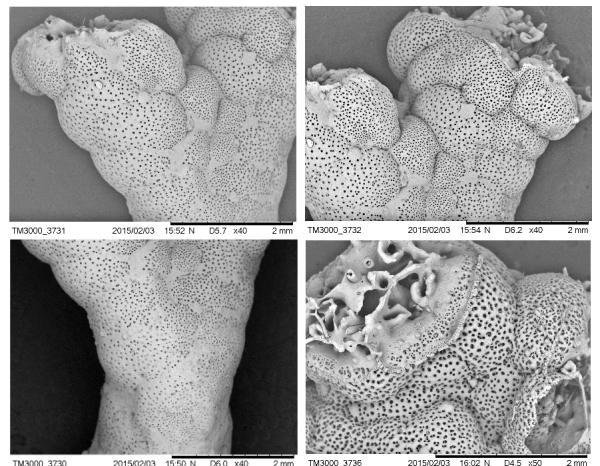A new foraminiferan has been discovered in moderately deep water (110 metres) northwest of the Bay of Islands in New Zealand. While identifying bryozoans from some material collected in the Bay of Islands this week, our resident expert Dr. Dennis Gordon, spotted something that looked a little different. He discovered a giant foraminiferan. Dennis consulted with world leading specialists on Foraminifera, Dr Bruce Hayward. Bruce realised it must be a form of Sporadotrema cylindrica - a widespread species of foram, which has not been recognised in New Zealand waters before.
The foram species Sporadotrema cylindrica (Carter, 1880) (family Homotrematidae) is said to be cosmopolitan in warmer waters, including New Caledonia, Pana and the Gulf of Mexico. It was originally described from the Gulf of Manaar, Sri Lanka.
This foram can grow up to 27 mm high, looking like a short, stubby tree. Each branch, 2-3 mm thick, consists of numerous porous chambers that are budded sequentially in a spiral fashion as the branch grows upwards. The species is highly variable in shape around the world, with the variations clustering into three major forms that overlap somewhat in characters, and it is not known with certainty if it constitutes one varied species or more than one genetic species. Very little gene-sequencing work has been done on foraminifera but one of the NIWA specimens is beautifully preserved in 99% ethanol and would be amenable to sequencing. Interestingly, Carter’s original description states that the Sri Lankan specimens were red, whereas the Bay of Islands specimens are whitish.
We have brought you a Critter of the Week blog about giant foraminifera before (CotW 55) and they are not as rare as they may seem even though this may be the first time you’ve heard of them. The idea that foraminifera are protozoans is no longer technically correct. Thanks to a plethora of studies on unicellular organisms around the world using cell ultrastructure and genetic data, the Catalogue of Life classifies foraminifera as part of phylum Retaria (which also includes most radiolarians) in the kingdom Chromista - which includes such diverse organisms as ciliates, water moulds and brown seaweeds.


